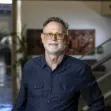United States
Why Hailing a Taxi May Soon Be Ancient History
Ted Mann explores the new wave of mobile applications changing the way cabs and their customers interact, which could make the act of physically hailing a cab obsolete in as soon as five years.
How the 'Cloud' Precipitates Pollution Across America
In the first article of a series exploring how the physical structures that support the explosion in digital information are effecting the environment, James Glanz examines the wasteful manner in which technology companies consume energy.
How Infrastructure Investment Became Political Fodder
Andrea Bernstein traces how, in four short years, partisan politics have infected discussions about investment in infrastructure.
Does Neighborhood Determine Personal Success?
Although the findings of a vast, decades-long study into the effectiveness of efforts to decrease the segregation of poor families did not turn up the results social scientists had hoped for, those efforts were successful in unexpected ways.
Why Cuts to Federal Funding for Bike Infrastructure May Be a Good Thing
Despite the rise in bicycling in many U.S. cities, federal funds have shrunk in the recent transportation bill. However changes in the way funds are allocated allows for more local control, and cities are stepping up.
New Home Construction Shows More Porches, Fewer Garages Per 2011 Census Data
As if to show that "walkable" is the new mobility in America, even with single-family-homes, new census findings show two-thirds of homes constructed last year had front porches while the number of garages or carports decreased to late 1990 levels.
Group Commuting Continues Upward Trend
New Census data out this week shows the share of Americans commuting by alternatives to the automobile continues to rise. In two-thirds of 342 metropolitan areas for which data was provided, public transit use was up, while solo driving dropped.
Which Metro Area Boasts 7 of the 10 Most Affluent Counties in America?
New rankings from the 2011 American Community Survey released Thursday show that the residents of the D.C. area have benefited from an economy built on "the federal government, its legions of contractors and a flourishing high-tech sector."
How to Keep a City Running During a Blackout
Dr. Jay Apt offers four cost-effective steps for cities to maintain essential services when the next big blackout hits.
America's Top Hipster Hoods
In what may prove to be the counter-argument for why it's the "best hipster neighborhood" in America, the Silver Lake section of Los Angeles has come out on top of Forbes' quasi-scientific rankings.
How Much Will a 'Fill-up' Cost for an Electric Car?
With only 50,000 electric cars on the road now, many charging stations are free - but what happens when the number multiplies? Electric car charging companies are counting on the number increasing and are determining "how to charge for the charge."
Bike-Share Creates Friendly Communities
The Christian Science Monitor argues why the growing popularity of bike-sharing programs across America will result in more cohesive communities and more livable places.
Lessons on TODs for DOTs
A new report produced by Smart Growth America and the State Smart Transportation Initiative offers recommendations for how state DOTs can innovate to support economic growth and better link land use and transportation decision-making.
The 50-Foot Commute Takes Off Across America
Jeff Khau examines the rise in the teleworking population and what this demographic shift means for cities.
Why Aren't There More Women in Design and Development?
Amanda Hurley explores the gender imbalance present among women in architecture and the "male-dominated world" of development, and questions the societal and biological justifications that many argue are determinants for choosing professional roles.
Inventive Infographic Charts Improvements in Driving Safety
Hannah Fairfield charts two variables - miles traveled versus deaths per 100,000 population - over the last 60+ years, and notes key technological or behavioral breakthroughs, to offer unique insight into advancements in driving safety.
Study Shows Smart Growth Reduces Automobile Usage
A new study shows that denser, more transit-oriented development will lead to an overall decrease in miles driven, reports Angie Schmitt.
How Andres Duany Envisions the Future by 'Translating' the Present
Rick Hampson explores the New Urbanist vision for how cities will be designed and planned over the next 30 years, as told by the movement's co-founder, Andres Duany.
Solutions to Fixing the Gas Tax Crisis
The Wall Street Journal published a 10-page energy section with the declining gas tax problem on page 1. Five solutions are offered: taxing the miles, taxing the roads, indexing the gas tax, taxing the oil, and taxing the cars. Each has challenges.
Architects Are Screwed
The American Institute of Architects has released the results of its 2012 Firm Survey. While the results won't likely come as a surprise, the numbers are pretty staggering: since early 2008 revenue has dropped 40% and employment has dropped 28%.
Pagination
Urban Design for Planners 1: Software Tools
This six-course series explores essential urban design concepts using open source software and equips planners with the tools they need to participate fully in the urban design process.
Planning for Universal Design
Learn the tools for implementing Universal Design in planning regulations.
Gallatin County Department of Planning & Community Development
Heyer Gruel & Associates PA
JM Goldson LLC
City of Camden Redevelopment Agency
City of Astoria
Transportation Research & Education Center (TREC) at Portland State University
Jefferson Parish Government
Camden Redevelopment Agency
City of Claremont


































